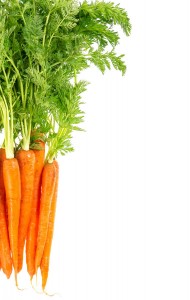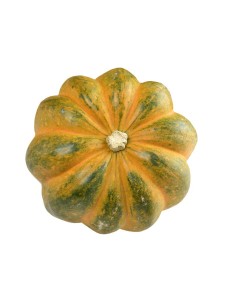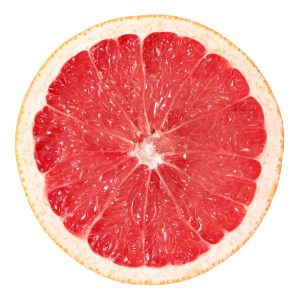Navigating the Produce Aisle in Winter
27 Dec 2014
Fresh & Healthy
By Shannon Burgert In winter and spring, the produce we find in grocery stores may have spent up to several weeks en route from South America in refrigerated ships and trucks. Add to that the time on display at the store and often a few days or more in the refrigerator at home, and the freshness of our fruits and vegetables will have waned.
With loss of freshness comes loss of nutrients. As an example, Vitamin C is particularly susceptible to degradation due to heat, light and oxygen. It has been shown to deteriorate by 15 percent in green peas and 77 percent in green beans over a period of seven days in the refrigerator.
So how do we get our hands on the freshest fruits and vegetables year-round?
Dr. John Douillard, a Boulder-based chiropractor trained in Ayurvedic medicine (a holistic form of medicine originating in India), says that the emphasis should always be on eating locally grown, seasonal produce. It’s a lot easier to get a variety of fresh produce year-round than we might think, particularly through food shares. Thanks to hoop houses (a series of large hoops covered with a layer of heavy greenhouse plastic) and hothouses (structures with heating), local food shares offer increasing options throughout the winter. Greens, in particular, have become easy to grow locally throughout the year. Some of them also make it to the grocery stores.
In winter and spring, the produce we find in grocery stores may have spent up to several weeks en route from South America in refrigerated ships and trucks. Add to that the time on display at the store and often a few days or more in the refrigerator at home, and the freshness of our fruits and vegetables will have waned.
With loss of freshness comes loss of nutrients. As an example, Vitamin C is particularly susceptible to degradation due to heat, light and oxygen. It has been shown to deteriorate by 15 percent in green peas and 77 percent in green beans over a period of seven days in the refrigerator.
So how do we get our hands on the freshest fruits and vegetables year-round?
Dr. John Douillard, a Boulder-based chiropractor trained in Ayurvedic medicine (a holistic form of medicine originating in India), says that the emphasis should always be on eating locally grown, seasonal produce. It’s a lot easier to get a variety of fresh produce year-round than we might think, particularly through food shares. Thanks to hoop houses (a series of large hoops covered with a layer of heavy greenhouse plastic) and hothouses (structures with heating), local food shares offer increasing options throughout the winter. Greens, in particular, have become easy to grow locally throughout the year. Some of them also make it to the grocery stores.
 Douillard also recommends shopping at smaller markets because they tend to have a tighter connection to local growers. Since local foods don’t need to spend time on ships and semis, they’re most likely to be picked at their peak and get to the market quickly. But not all produce shipped from afar takes weeks to reach Colorado stores. As shipping becomes faster, it’s not so bad to pick up that avocado or grapefruit in January, says Douillard.
The key, he says, is to buy organic.
Douillard also recommends shopping at smaller markets because they tend to have a tighter connection to local growers. Since local foods don’t need to spend time on ships and semis, they’re most likely to be picked at their peak and get to the market quickly. But not all produce shipped from afar takes weeks to reach Colorado stores. As shipping becomes faster, it’s not so bad to pick up that avocado or grapefruit in January, says Douillard.
The key, he says, is to buy organic.
Why Organic Means Fresher
Organic produce is likely to be fresh, because it can’t last for weeks in transit or on shelves. “I would buy organic tomatoes rather than conventional tomatoes because there is a higher probability that they were taken in their peak,” says Kyle Mendenhall, executive chef for The Kitchen restaurants. Nutrient density has fallen dramatically in produce after many decades of soil depletion, but new research shows that organic foods are becoming more nutrient-rich again, Douillard says. Douillard points to an added benefit to buying fresh, organic produce: microbes. More than 90 percent of the cells in our bodies are microbes, and produce that is fresh and organic contributes toward a strong and diverse microbial population—that’s what we want. The microbial population available from plants shifts through the seasons, Douillard says, because certain plants attract certain microbes.
To minimize the time fruits and vegetables spend between harvest and consumption, Mendenhall suggests shopping for produce frequently and planning ahead, thinking seasonally. The effort will pay off not only in nutrition, but also in taste. “If you find things in their peak, you shouldn’t have to do very much to them” to pull out good flavor, he says.
The vegetables that are the freshest are often the ones that are going to require just a bit more work at home. When you’re at the store, head for the vegetables that have roots and greens still attached. If the roots are still attached, the vegetable is still growing, Mendenhall says. The greens, such as carrot tops, can also give a clue as to the freshness of the produce—they should be vibrant, green and sturdy. Stems and stalks should be neither dried-out nor slimy. Choose lettuces and other greens that are not prewashed.
Douillard points to an added benefit to buying fresh, organic produce: microbes. More than 90 percent of the cells in our bodies are microbes, and produce that is fresh and organic contributes toward a strong and diverse microbial population—that’s what we want. The microbial population available from plants shifts through the seasons, Douillard says, because certain plants attract certain microbes.
To minimize the time fruits and vegetables spend between harvest and consumption, Mendenhall suggests shopping for produce frequently and planning ahead, thinking seasonally. The effort will pay off not only in nutrition, but also in taste. “If you find things in their peak, you shouldn’t have to do very much to them” to pull out good flavor, he says.
The vegetables that are the freshest are often the ones that are going to require just a bit more work at home. When you’re at the store, head for the vegetables that have roots and greens still attached. If the roots are still attached, the vegetable is still growing, Mendenhall says. The greens, such as carrot tops, can also give a clue as to the freshness of the produce—they should be vibrant, green and sturdy. Stems and stalks should be neither dried-out nor slimy. Choose lettuces and other greens that are not prewashed.
Phone It In
There are phone apps that can assist with choosing the freshest produce. “Harvest” ($1.99), for instance, suggests that acorn squash should be “mainly deep, dark green” and that “shiny skin signals it was picked prematurely, unless it has protective wax applied.” A yellow spot on the bottom of a watermelon indicates that the fruit was allowed to ripen in the sun. The app sorts produce by state and season, and it also rates the pesticide levels of fruits and vegetables grown conventionally. In addition to suggestions for choosing the freshest produce at the market, “Produce Picker” ($0.99) offers pointers for proper storage to maintain freshness at home. “Farmanac” ($1.99) offers guidance on what’s in season, selection and storage tips, and the added benefit of being searchable by the four-digit PLU code. When it’s finally time to prep, Mendenhall recommends keeping the peels on produce like carrots, potatoes and apples to maintain nutrition and taste. Rather than peel, just wash and scrub, he says. But there aren’t any apps to help with the washing, scrubbing and chopping—at least not yet.Shannon Burgert, Ph.D., a freelance writer and Ironman athlete, teaches fifth grade at Fireside Elementary School in Louisville.












